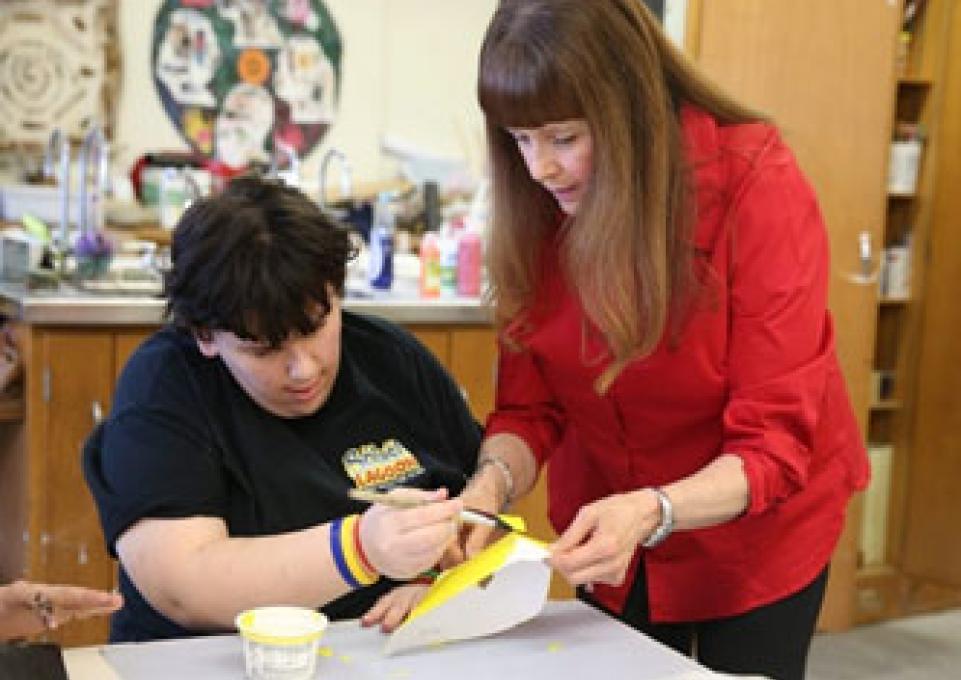
If you look inside any hospital, senior center, psychiatric facility, and even some schools, you are likely to find an art therapist helping individuals overcome obstacles and achieve new levels of success.
Art therapy combines art media, the creative process, and psychology to explore feelings, reconcile emotional conflicts, improve cognitive skills, and restore a sense of personal well-being, according to Lucy Andrus, professor of art education and art therapist.
While art therapist positions require a master’s degree, undergraduates at Buffalo State get a taste of the discipline and can prepare for graduate school through an art therapy minor overseen by Andrus, who had a private art therapy practice and has taught for 33 years. Currently, 55 students are enrolled in the minor.
“Many of these students are interested in pursuing art therapy with future graduate study and then a career,” said Andrus. “If they are good, they will get jobs.”
Andrus can speak to the benefits of art therapy, the need for art therapists in the future, as well as the concept of therapeutic teaching methods for children at risk.
“With the move to a more inclusionary model of education, there is a predicted need for art therapists for treating children with disabilities as well as children dealing with challenging life circumstances such as poverty or domestic violence,” said Andrus.
She knows from experience how beneficial the combination of art and therapy can be. Twenty years ago, she developed the college’s Art Partners Program, which continues to offer therapeutic art education to urban students with special learning needs.
Every year, Buffalo State students on the Art Partners teaching team work with Andrus to develop a range of art projects for students with disabilities and those considered at risk in Buffalo public schools. Currently, a group of students with developmental disabilities from McKinley High School spend two hours a week on the Buffalo State campus working with the team on projects that weave together a number of lessons following a theme.
According to McKinley special education teachers Dina Ziegler and Peggy Dolan, the program is a boon to their students.
“It’s amazing to see what concepts the students can remember from year to year,” said Dolan, noting that these same students often struggle with life skills such as telling time. Yet they flourish when handed a paintbrush or are instructed on how to create a quilt.
“They take tremendous pride in the artwork they are able to create,” she said.
Andrus wrote a chapter on art education, art therapy, and therapeutic teaching for the 2006 book Reaching and Teaching Students with Special Needs (National Art Education Association). One excerpt sums up what she has learned:
“In my experience, art teachers attest to the fact that the art room is often the one place children with special needs can function on equal footing with their peers in general education. In fact, some teachers discover unexpectedly that a child with special needs not only prospers in the art room, but may, in fact, demonstrate exceptional ability.”
